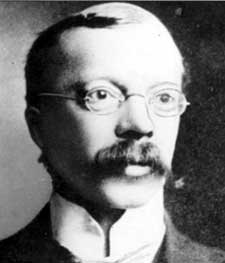
Forensic science is a fascinating topic in its own right but when its employed, discussed and debated in relation to celebrities, high profile trials and key historical figures it becomes utterly compelling.
Dr Hawley Harvey Crippen
Forensic science is shedding new light on one of the most notorious murder cases in British history. In 1910 American born Dr Hawley Harvey Crippen was found guilty and subsequently hanged for the murder of his wife Cora. Crippen is said to have poisoned Cora, dismembered her body and then buried her remains in the cellar of their London home.
However, in a remarkable twist to a case that has spawned intrigue and interest for almost a century a team of forensic scientists from Michigan State University believes that modern forensic science proves that the remains buried in Crippen’s cellar could not be those of his wife.
The forensic team behind this amazing finding was David Foran, a forensic biologist and director of MSU’s forensic science program, forensic toxicologist John Harris Trestrail and genealogist Beth Wills. The basis for their claim arose from DNA analysis conducted on a microscope slide sample that was presented as evidence during Crippen's trial. During the trial forensic pathologist Bernard Spilsbury testified that the sample revealed an abdominal scar consistent with Cora Crippen's medical history, testimony that helped convince the jury that the remains were those of Cora.
The simple premiss underpinning extremely complex forensic DNA analysis is that if Dr Hawley Harvey Crippen murdered his wife and disposed of remains, then those remains would share specific DNA characteristics with Cora Crippen’s living relatives. However, they do not! As David Foran notes "We took a lot of precautions when doing this testing...We just didn’t stop. We went back and started from scratch and tested it again. The DNA in the sample is different from the known relatives of Cora Crippen."
Which of course begs the question, whose remains were buried in the cellar?
Read More
No comments:
Post a Comment